Parenting a cat can often bring you litter cleaning issues. Especially when it comes to how often should you change cat litter from their litter box. We help you deal with changing cat litter and cleaning their box the right way.
A litter box is essential in every cat household. The litter in the box is an absorbent material that helps in soaking up urine and hiding feces. But what if you do not change the cat litter often? What if your cat refuses to use the litter box and pee around the house instead?
One of the many reasons that a cat might not use his litter box is because it is dirty and unclean. A major step in cleaning a litter box is by replacing the cat litter.
The question here is, how often should you change cat litter. We help you get the answers to all the litter related queries and keep your cat’s litter box spic, span, and clean.
How Often Should You Change Your Cat Litter?
Ideally, once or twice a day of scooping cat litter from the litter box is recommended whereas the entire litter should be replaced once a week.
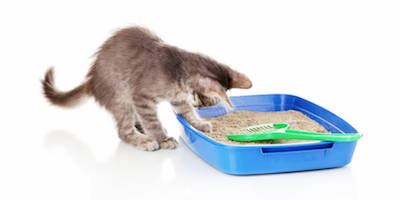
If the cat feces is too stinky and creates a lot of odor, it is best to scoop it out immediately as soon as your cat has finished his business. Stinky and dirty litter boxes are a total turn off and this may even cause your cat to pee or poop anywhere else apart from the litter box.
If you own multiple cats, then you will have to scoop more number of times a day as you need to have multiple litter boxes. According to Colleen Wallace, D.V.M., and associate veterinarian at the Cozy Cat Veterinary Hospital in Raleigh, N.C, there is a simple equation to solve the question of ”how often should you change cat litter?”
It’s pretty simple and works for multiple cat owners. Simply count the number of cats in your house and divide it by the number of litter boxes; that will give you the least number of times you need to clean the box daily.
For e.g. if you have 5 cats and 5 litter boxes, then according to the equation the cat litter has to be changed at least once for each box.
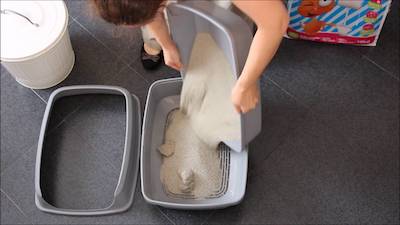
Since cats have a natural instinct of burrowing their poop, the litter in the box serves great to keep the natural ‘neat freaks’ alive within them.
Apart from daily scooping, change the entire litter in the box once a week along with cleaning and washing the litter box with soap and warm water to keep it fresh for use.
While replacing the dirty litter with a fresh stock, make sure to fill it enough for your cat to dig and burrow deep, almost 2-3 inches of the litter box. There are various types of litter available in the market that we speak of in our next section. Ideally, 2-3 inches of non-clumping and 3-4 inches of clumping litter should be sufficient for your kitty.
Types of Cat Litter
Since we discussed how often should you change cat litter, what types of cat litter can you opt for while changing? We list them for you.
-
Clumping Clay
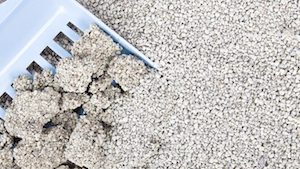
As the name suggests, this type of litter is easy to clump and scoop and is highly absorbent. The clay is made of bentonite and easily forms solid clumps when your cat urinates.
The only problem is that the litter is heavy, too dusty, and non-biodegradable although, most cats prefer clumping clay. This form of litter is easy to clean and pick with a scooper although it feels heavy upon clumping. You can change it once in 4-5 days.
-
Non-Clumping Litter
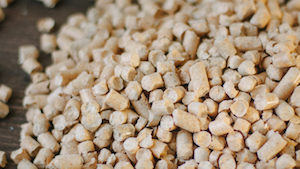
This is made of clay apart from bentonite and is not as absorbent as clumping clay. This means it will not form clumps when your cat urinates and the urine might stay around the surface.
Non-clumping clay will not help prevent the odor and needs to be replaced more often as it can get smellier. However, this is much cheaper than clumping clay and also preferred by many cats. You may need to replace it often due to the litter being less absorbent.
Non-clumping litter is dusty and can be cleaned and replaced using a scooper. Although, the consistency of the litter might make it difficult to handle while cleaning.
-
Silica Gel Crystals
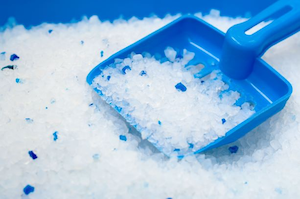
Silica gel crystals often resemble the desiccant beads that are available with food products or medicines that need to control moisture and look like tiny beads or pouches filled with gel.
These crystals are highly absorbent and reduce odor efficiently although, they are heavily priced. These gel crystals last for quite some time and can be considered when you go for a long journey for a few days and there is no scope of replacing your cat’s litter at home.
One of the major drawbacks is that if these crystals are ingested, they can cause harm to your pet. Secondly, most cats like a mixture of rough and smooth below their paws, and silica gels do not offer the same as they are too soft.
-
Pine
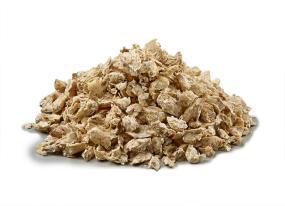
Pine is a recycled form of litter obtained from lumber scraps or wood pieces. The scraps are heat-treated to remove the toxins, allergens, and oils from the wood. Pine litter is usually available as pellets or granules and form clumps easily while coming in contact with urine.
It turns into sawdust when in contact with moisture and needs to be replaced pretty often, within 1-2 days. The natural pine scent of the litter helps control urine and fecal odor. These are easy to collect and clean but can get dusty and allergic if spread around the house.
-
Grass
A new form of litter that is made from grass fibers, grass litter controls odor and has good clumping ability. The best part is, disposing of grass litter won’t pinch you as it is biodegradable and provides a decent surface for your cat to place his paws on while digging into the litter.
However, dry grass can get dusty and allergic and will serve its purpose for a maximum of 3-4 days after which it needs to be replaced.
You can also refer to our article on the best price cat litter for pocket-friendly purchase.
How to Dispose Of Cat Litter
For all those who are wondering, what after changing the cat litter; the obvious question is How To Dispose of Cat Litter? Here is what you can do.
-
Use the Trash Bin
This is probably the best way known to dispose of the cat litter, by putting it in the trash can. But that’s not all. There is a protocol you need to follow. Litter boxes should be scooped at least once a day.
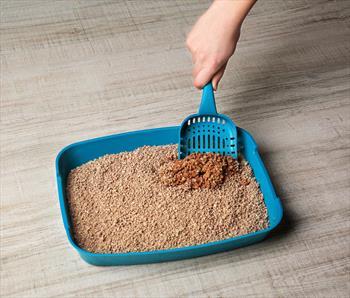
You can use a scooper to remove the urine clumps and poop clusters and collect them in a trash bag. Make sure to do this for every litter box in your house and once done, collect all the waste litter in a trash bag and tie it well.
Use two bags if necessary as wet clay litter can sometimes get heavy and should not fall off the bag. Make sure to get a heavy-duty garbage bag and seal the bags well for the odor and litter to not escape.
Once done, dispose of it off in the garbage bin. Do not just pour the litter with the cat sheddings in the trash can as this may lead to spreading odor and germs in the air which can get dangerous if inhaled. Therefore, proper and hygienic disposing of is recommended.
If you have a facility at your house where you can burn the pile of litter, then it reduces the smell and makes it more convenient to throw. However, clay litter does burn well but gets collected at the bottom of the pile. Some forms of litter are biodegradable, although, they may end up releasing harmful toxins in the air.
-
Recycle Litter
Clay litter is the most commonly used form of litter which is non-recyclable. But recent discoveries prove that there are other forms of litter too, that are biodegradable.
Nowadays, litter can be made using sand, grass, pine, paper, etc. They are also known to be quite absorbent and cheap. Moreover, you can use them for making compost. But is it really safe to recycle them?
Your cat’s feces can carry a lot more unimaginable organisms like E. coli. Infected cats also end up shedding germs and pathogens in their stool like Toxoplasma gondii. These pathogens can be harmful if exposed to the environment as they can infect other animals and humans coming in contact with the litter and sheddings.
Use the litter carefully if you plan to recycle it and handle it with gloves to avoid direct contact with pathogens in the litter. Limited use of litter like making compost for flower gardens is reasonable but do not use it for anything beyond that.
You can also read
How Often Should You Clean The Litter Box
Ask about cleaning and changing cat litter, it is also important to know How Often Should You Clean The Litter Box. One needs to be very regular about cleaning a litter box and wash it at least once a week.
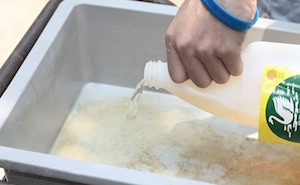
Maintain a weekly litter box cleaning regimen along with scooping the cat litter from the box on a daily basis.
Here is a protocol you can follow:
- It is necessary to scoop the litter box at least once or twice a day.
- Remove all the dirty litter and clean the litter box once a week.
- Dispose of the litter in a heavy-duty trash bag and throw it in the garbage can.
- Make sure to scrape off any dirt or litter at the corner of the box.
- You can use a mild soap or a fragrance-free enzyme-based detergent along with warm water and scrub or brush.
- Do not forget to wear gloves while washing in order to avoid direct contact with urine and fecal germs that might be present in the litter.
- Do not use any chemical-based soaps or detergents that can get toxic and deter your cat away from the litter box.
- For natural remedies, you can also use baking soda or vinegar to get rid of the odor and break the dirt particles for efficient washing.
- Make sure to dry the litter box well before you replace it with a new litter
PRO TIP: Put a thin layer of baking soda before placing the litter on the litter box. Baking soda helps in absorbing the stink away from the litter making it a better, odorless environment for you and your cat.
Final Note
Now that we know that your cat’s litter needs to be scooped every day, it should be effortless with our guidelines on scooping and disposing of the litter.
Moreover, it is important that you encourage your cat to use the litter box in order to protect your house and floors from getting dirty. As they say, everything comes with a price. A clean house with a cat comes with a dirty litter box and regular scooping.
With our easy steps to follow and as to how often should you change cat litter, good luck with scooping and cleaning your feline’s litter box!!
FAQs
Can you flush cat litter?
It is not recommended to flush cat litter as it can create havoc in your plumbing system. Most clay litters are not flushable and cat litter should not be disposed of by flushing. Cat litter can contain harmful pathogens and can end up creating an unhygienic environment.
What is the best type of cat litter?
Corn, wheat, and pine are the best types of cat litter. These types of litter have a natural smell that reduces odor, and do not create dust as well as are biodegradable. Moreover, they are easy to scoop and clean as well.
Is cat litter harmful to humans?
Cat litter comes as small particles that can spread in the air and lead to harmful allergies or asthma. In addition to that a pregnant woman must avoid handling cat litter as it can cause toxoplasmosis if the mother gets infected and can also lead to birth defects in babies.
How do I get rid of the cat litter smell?
The best way to keep cat litter smell away is by scooping the litter daily and cleaning the litter box regularly. Alternatively, you can also use baking soda as a remedy to break the odor particles and get rid of the litter smell.
How often should a litter box be scooped?
A litter box should be scooped daily. The litter in the box can form clusters due to urine or can have poop burrowed inside which needs to be disposed of to avoid odor.
How often should you change a litter box?
This depends upon the material of the litter box. Ideally, it is recommended to change the box every 2-3 months. If the litter box is made of stainless steel, it is durable and scratch-proof whereas plastic can wear off pretty easily.\
Search for scratches or cat nail marks on the litter box as they can retain odor and litter within the scratches and crevices. In such cases, change the litter box as soon as possible.
Do cats ingest litter?
Cats ingest litter and other non-edible items due to various reasons, a condition known as Pica. This can happen due to stress or anxiety in cats. However, ingesting litter is not safe for cats as it can cause choking and intestinal disorders.

